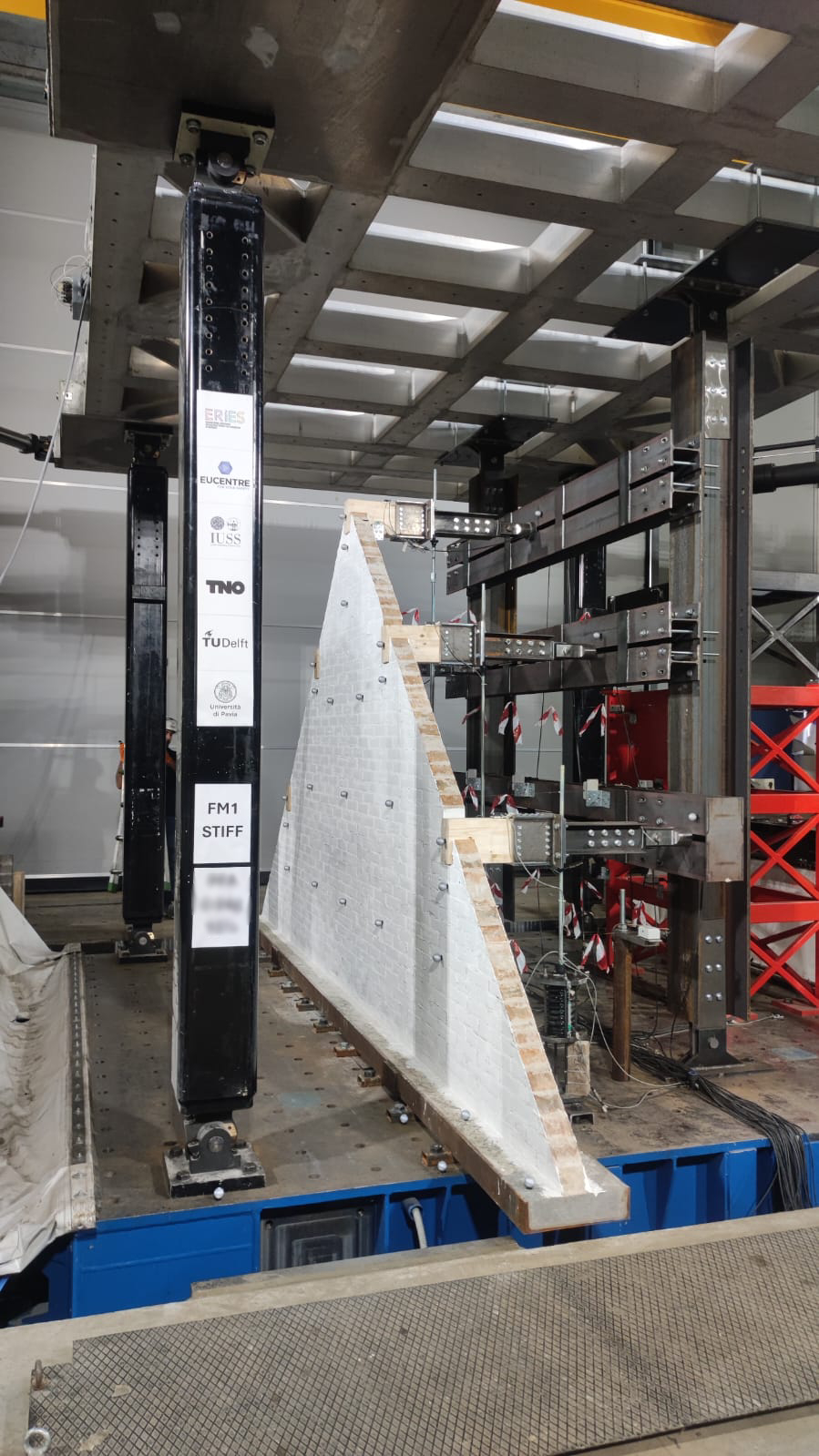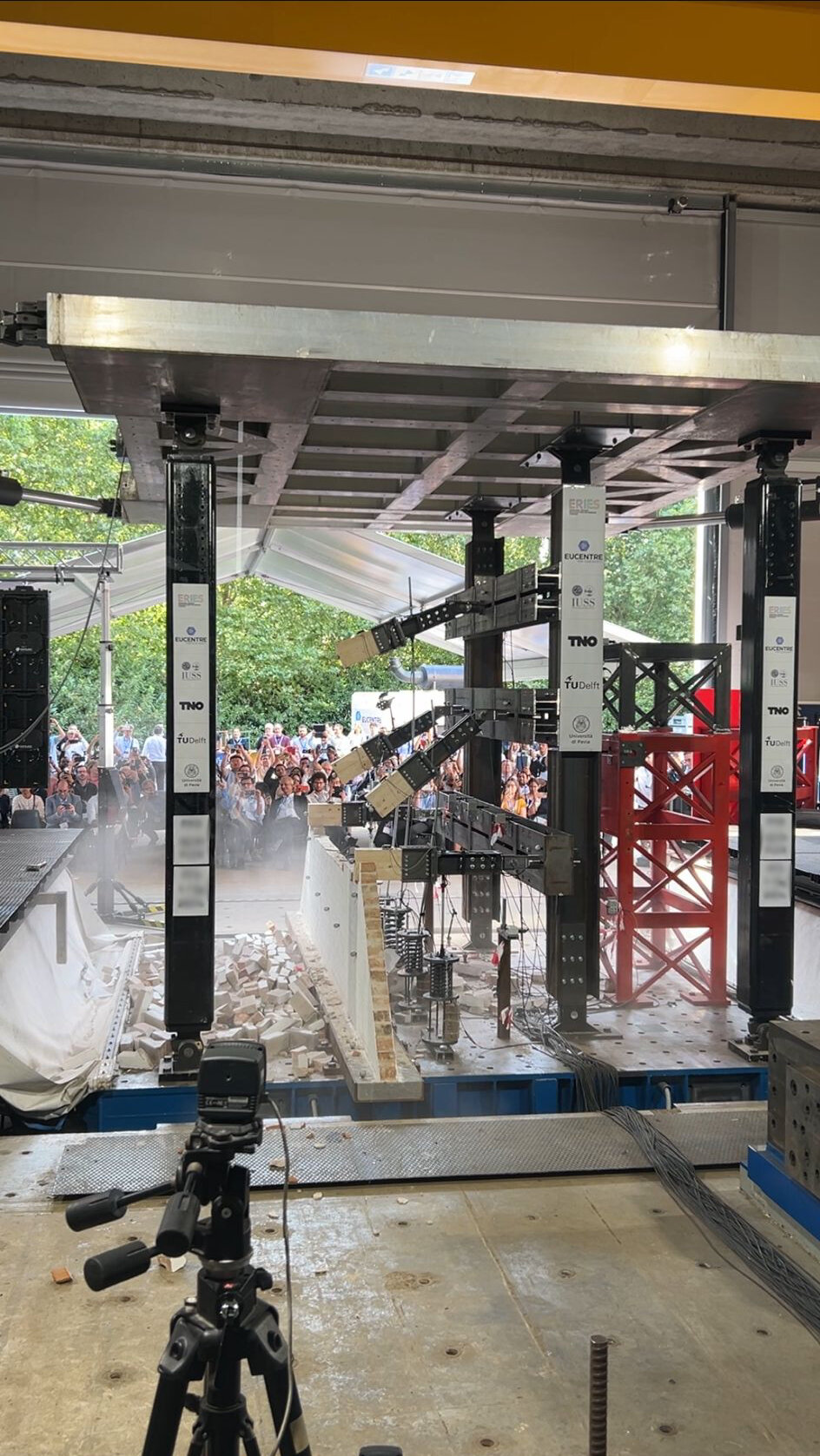Pinpointing the weak spot in a masonry building
TU Delft researchers are investigating how best to strengthen houses against earthquake damage. Francesco Messali aims to pinpoint more precisely where the vulnerable spot is. This could yield gains in reinforcing houses faster and more efficiently, avoiding unnecessarily extensive and costly interventions.
This summer, a series of earthquakes is shaking three gable walls, at the EUCENTRE research centre in Italy. These experiments are setup to reveal the effects of earthquakes on a gable wall, the triangular upper part of a masonry wall formed between the edges of a sloping roof,. This is a common way of building in the Netherlands, but the interaction between roof and wall makes it difficult to predict how the structure will react to an earthquake. Different types of roof-wall combinations are about to be tested.
Blind prediction contest
How might collapse occur? In a blind prediction contest, international experts are challenged to predict this: will the numerical models match the experiments?
Previous studies by TNO and TU Delft supported the Dutch engineering companies in properly assessing whether a masonry building fulfils the safety requirements or not in the event of earthquakes. If the answer is no, extensive intervention possibly involving the entire building might be needed, to be on the safe side.
Strengthening just the right spot
Identification of the weak spot can minimize costs and the invasiveness of the intervention. In additional research performed by TU Delft, University of Pavia and TNO, a fast and consistent assessment method is being developed for individual walls. "This will make it possible to show which part of the building needs strengthening. Then it will be possible to repair a house by strengthening just one wall, for example," Messali says. He hopes this will make strengthening procedures more efficient and speed them up considerably.
TU Delft is conducting this research together with TNO and the University of Pavia, for the Ministry of Economic Affairs. The experimental campaign, ERIES-Supreme, is part of the Horizon Europe project ERIES.


